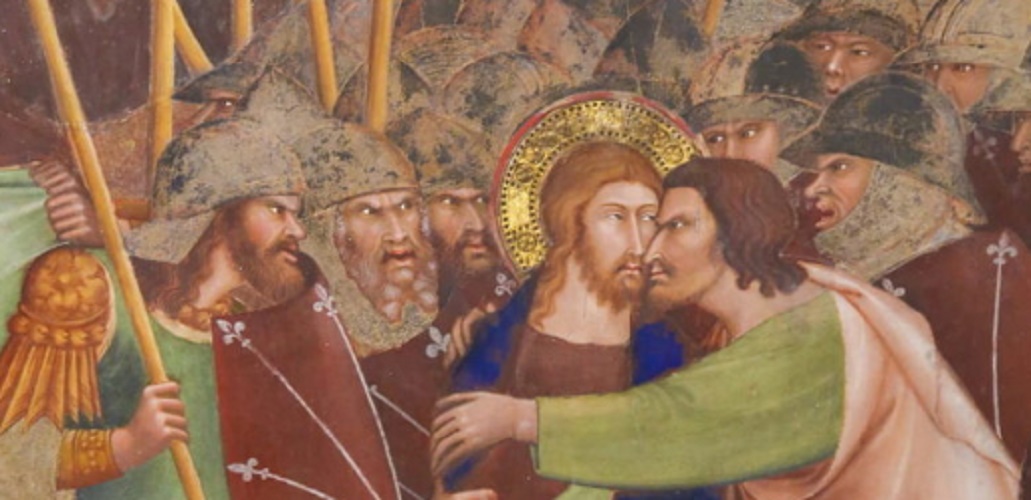What was the Middle Ages?
We explain what the Middle Ages was, its stages, art, literature and other characteristics. Also, what was feudalism.
-
What was the Middle Ages?
The period of the history of the West that begins with the fall of the Roman Empire of the West in the year 476, and ends with the discovery of America in 1492 or the fall of the Byzantine Empire in 1453, date in which the Hundred Years War also culminates.
Its thousand years were characterized by a relative stagnation in the development of culture and science , under the rule of the religious mentality of Christianity, which is why it was used to be called the “Age of Darkness.”
The Middle Ages receives its name for being the transit between the Old Age and the Modern Age . During this period, society embraced a feudal order, essentially rural or rural, and Christian dogmatism governed culture.
However, medieval life was far from immovable or serene, but it was the scene of numerous human displacements , abundant wars and new political forms , mainly in European border cultures, such as Muslim Arabic or Eastern Christianity (Byzantium) .
Especially important was the clash between Christian and Islamic civilization, with reciprocal attempts at conquest such as Muslim expansion from the seventh to the fifteenth century or the numerous Christian Crusades.
Finally, it should be noted that the Middle Ages, as a historical period, cannot be applied at all to civilizations other than the Western, such as China, India or Japan, flourishing during that same period. The consideration that the history of Europe is the history of the world is a biased, Eurocentric and discriminating historical criterion.
-
Characteristics of the Middle Ages
The Middle Ages is the time of the walking knights, of the Catholic kings and kingdoms, and of the long rural wars for reasons of religion. Although much of it is shown in a romantic way in contemporary fictions, there was never magic, or species other than human (elves, orcs, goblins, etc.), or dragons.
However, these supernatural beings were part of the imaginary in force at the time, in which local traditions and beliefs faced the dominant Christian religion. In general, faith prevailed over reason or understanding.
It was an extensive period, deep but slow transformations. For example, the slave production mode of Antiquity was replaced by the feudal mode of production .
The diversity of what happened during a thousand years does not allow too homogeneous reading. However, in the Middle Ages mass epidemics, military invasions and superstition abounded , although in the latter it is possible that Christianity cataloged as ignorance or superstition to any vestige of previous pagan religions.
-
Stages of the Middle Ages
The Middle Ages are commonly divided into two stages:
Early or High Middle Ages (5th to 10th centuries) . It began with the fall of the Roman Empire. Christianity consolidated in Europe and spread to new territories, while Jerusalem passed into Muslim hands. It ended with the proper start of the feudal institutions, the rise in the East of the Macedonian dynasty and the decline of the Abbasid Caliphate.
Low Middle Ages (eleventh to fifteenth centuries) . The properly feudal stage of the Middle Ages, marked by the appearance of the Black Death (1348) that claimed millions of lives in Europe and reduced its population by half. At this stage the early bourgeoisie emerged as a new social class , which drove the necessary changes for the emergence of capitalism and the end of the Middle Ages.
The low Middle Ages in turn comprise two stages:
- Full middle ages . It covers from the eleventh to the thirteenth centuries, in which the birth of the city takes place and the expulsion of Islam from various lands of Europe, such as the Iberian Peninsula, Sicily or the Middle East begins to occur. It is considered a peak of medieval culture, with the optimal climatic period providing the necessary heat to have more tolerable winters and more abundant crops.
- Crisis of the fourteenth century . Also called The secular crisis, covers the last two centuries of the Middle Ages and witnessed the destabilization of medieval society as a result of prolonged war conflicts, as well as the emergence of future modern values, such as the scholastic crisis. This is the final stretch of the Middle Ages.
-
Middle Age Literature
Medieval literature is well known, especially in regard to cavalry cycles, in which the adventures of Christian warriors were told in a vast world, full of magic and mysteries. They were generally narrated through Christian or religious symbols and metaphors.
These cycles, such as the Arthurian or the Breton, were then accompanied by bestiaries, books often complemented with images in which the account of animals known to man was kept, many of them imaginary, and interpreted from a Christian moral .
Later, hagiography and religious poetry predominated as the main genres of Christian Europe, whose cultural and scientific manifestations were controlled by the Church. Towards the end of the Middle Ages, courteous love became the protagonist of the stories, always in a bucolic imagination , as well as epic songs and fables .
Some representative titles of the medieval tradition are: El Amadís de Gaula (anonymous, 1508), Beowulf (anonymous, date unknown), Cantar de mio Cid (anonymous, 1200) and the Divine comedy (Dante Alighieri, 1304-1321) and Los Canterbury tales (Geoffrey Chaucer, 1387-1400).
-
Art of the Middle Ages

When thinking about the art of the Middle Ages, we must consider that it arose at a time in history in which the notion of art did not exist as an end in itself , not even that of Fine Arts , but of the mechanical arts, linked to the trade.
Thus, medieval art had a clear function , which could be:
- Serve as an offering to God .
- Serve as a pedagogical accompaniment of Christian rites and knowledge.
- Be an affirmation of political power (portraits of kings, nobles, etc.) or religious (religious scenes).
In many cases medieval art was influenced by other invading or bordering cultures, as is the case with Byzantine art, with the Iberian Mozarabic, among others. Great works of painting , architecture and music were composed during this period.
-
Philosophy of the Middle Ages
The medieval philosophy tried, throughout its thousand years of duration, to find a synthesis between the different traditions of thought that it inherited , such as Christian, Jewish, Islamic (by contagion) and that coming from Classical Antiquity.
Because of the Christian predominance in medieval culture, most of the fundamental authors of antiquity, such as Plato, Socrates or Aristotle, were inaccessible by censorship and the prohibition of “pagan” influences. Paradoxically , many of them came by Muslim translations, since Arab culture was more open to influences from the past.
These translations allowed the re-entry of Aristotle, who was a name referred to abundantly after the twelfth century, influencing the work of authors such as Ramón Llull, Tomás de Aquino, Guillermo de Ockham and Juan Duns Scoto, while other previous authors such as Agustín de Hipona, Juan Escoto Erígena or Anselmo de Canterbury were of platonic affiliation.
The central themes of medieval philosophy had to do with faith, reason, nature and divine existence, the problem of evil, human free will and other matters that reflected on the way in which the divine and the earthly world were intermingled . Modern ideas of science, empirical knowledge and experiment did not exist as such in the mentality of the time.
-
Middle Age Feudalism

The feudal society of the Middle Ages was fundamentally rural . It distinguished two major social classes, which constituted the feudal mode of production:
- The military aristocracy , composed of landowners who administered their territories socially, politically and legally.
- The servants of the impoverished peasantry , who worked the land for the benefit of the feudal lord, and secondly, of their own, receiving security and order in return.
On the other hand, they were joined by the clergy , that is, the Catholic Church, which crowned the kings and administered the moral, spiritual and legal authority of the different Christian kingdoms, as representatives of the law of God on Earth.
Often the adherence to the clergy (the entrance to their institutions) was the only way of social ascent of the poor classes, along with the war , since adherence to the nobility or commoners was determined from birth .
Feudalism found its end with the rise of the bourgeoisie . It was a new social class that managed business and merchandise, emerging as a political and economic power detached from the nobility of origin.
Eventually that new middle class drove the Renaissance and the Modern Age. Through the Bourgeois Revolutions, they established capitalism and the Republic as the new values of the West.
-
Church of the Middle Ages
One of the best-known features of the Middle Ages was the omnipresence of the Catholic Church, whose interventions in politics were constant and fundamental . This period is often characterized by its theocratic governments, in which the Church crowned kings and endorsed them as emissaries of God on earth.
The Church controlled the written letter, the official knowledge and exercised judicial functions , since the laws with which society governed were religious, beyond those imposed by the feudal lords in their respective local governments. The ecclesiastical authorities could even prosecute kings and nobles, since the law of God was above that of men.
In that sense, the role of the Holy Inquisition of the Catholic Church was sadly celebrated. Their representatives acted as emissaries of ecclesiastical power that questioned the faith of people accused of witchcraft , demonic covenants or paganism.
In these processes any person accused by their enemies, scientists dedicated to research, or women accused of witches could be involved. The accusation alone served for the Inquisition to take matters into their own brutal hands, and subject people to torture, humiliation and persecution.





